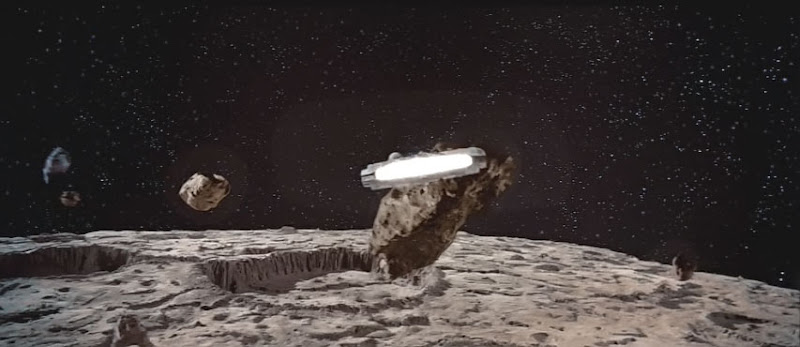there is a different quality of black to the space the ship passes through than the rest of frame in some shots as well.
A "different quality black" is usually indicative of laboratory opticals, rather than in-camera latent image photography. I can't speak with any authority on ALIEN, as I don't remember much—if anything—I might have read about the VFX work.


In a pre-digital age, laboratory opticals had the advantage of control, while in-camera latent image composites had the advantage of "latitude"—the light energy of the real scene is quite different from the limited bandwidth that can be captured on film. So again, mis-matched blacks are usually a sign of lab work. Although the cinematographers may have used a matte box on the camera to control the exposure zones.
Just to clarify, what we're seing there are the outlines of the garbage mattes used to obliterate anything non-blue in the element (light stands, etc.). The lighter areas around the objects are the areas which are not garbage matted out, which are exposed to more light than the matted out areas.


